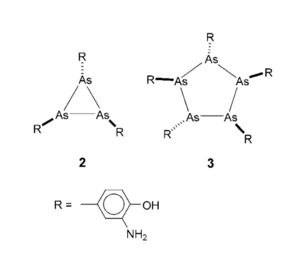User:Cenizalevine1
Introduction
Human treponemal diseases, including the sexually transmitted infection syphilis, have existed as early as the fifteenth century. The exact origins of syphilis are unknown– there is considerable debate as to whether Christopher Columbus spread syphilis to different parts of the world on his voyages, or if syphilis was already present in different parts of the world before his travels. In the early twentieth century, two scientists named Schaudinn and Hoffman identified the bacterium that causes syphilis, and they named it Treponema Pallidum.
Genome
Include some current research, with at least one figure showing data.
Every point of information REQUIRES CITATION using the citation tool shown above.
Infection and Treatment
Stages of Infection
Primary syphilis: This period lasts about 2-4 weeks and is associated with a chancre– an ulcer at the site of the infection. It is small (about a center in diameter), hard and painless. After a few weeks it will heal and scar over, because the macrophages cause the treponemas to undergo phagocytosis. Once the chancre has healed, the syphilis is considered to be in a latent stage. The infected person may be asymptomatic for up to five years.
Secondary syphilis: defined by a rash over the whole body, particularly around the palms of the hand and feet; the rash will eventually crust over. The which rash resembles the rashes of other illnesses (giving syphilis its nickname as the “great imitator.”) The rash is caused by “bacterial intrusion in blood and lymph nodes.” Other symptoms of secondary syphilis include pyrexia, body pains, fatigue, fever and sore throat. At this point, the patient can still respond to antibiotics. If untreated, 70% of infected persons will enter the latent period; the other 30% will progress to tertiary syphilis.
Tertiary syphilis: This stage is associated with cardiovascular symptoms, such as aneurysms, and neurological symptoms, such as seizures, blindness, and meningitis. At this stage the patient may have gummas– necrotic granulomatous lesions– on their skin and bones. In some cases the patient will die.
Latent stage: The infected person is asymptomatic but can still test positive on serological tests. The latent stage is considered early within one year of infection, and it is considered late past one year of infection.
Include some current research, with at least one figure showing data.
Diagnosis and Screening:
Direct detection: To diagnose patients with syphilis, doctors will often use dark-field microscopy to identify the presence of T. pallidum directly. The method is fairly effective, though there are limits. The accuracy of the diagnosis depends on the lesions and the skill of the microscopist, and there are certain areas of the body that dark-field microscopy cannot examine. Direct fluorescent antibody tests and nucleic-acid amplification tests can also be used to detect T. pallidum, but they are more often used in research labs.
Serological Test for Syphilis (STS): Such tests are affordable, easy to obtain, and give results quickly. However, they are known for false positives and are not sensitive to primary or tertiary syphilis. For this reason, it is common practice in the U.S. to use multiple STSs to confirm a syphilis diagnosis– one non-treponemal test and one treponemal STS.
history of treatment

Section 3
Include some current research, with at least one figure showing data.
Section 4
Conclusion
References
Authored for BIOL 238 Microbiology, taught by Joan Slonczewski, 2023, Kenyon College
